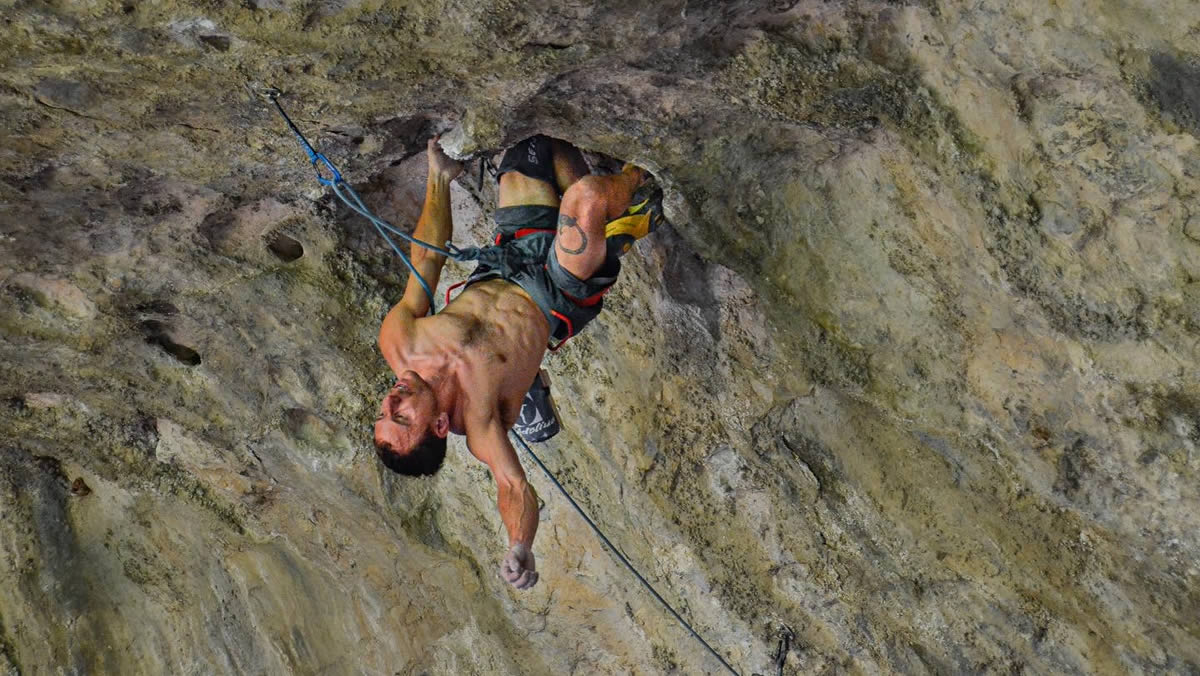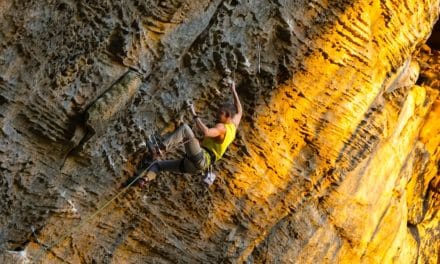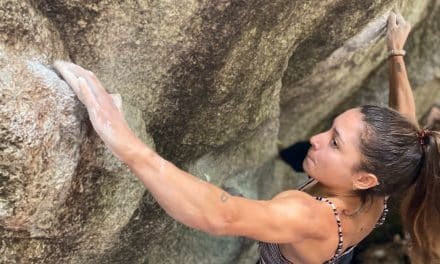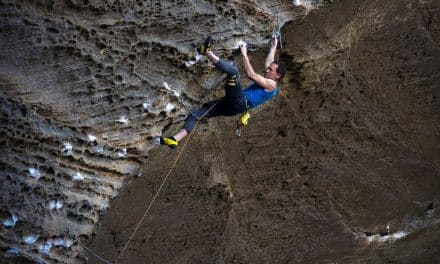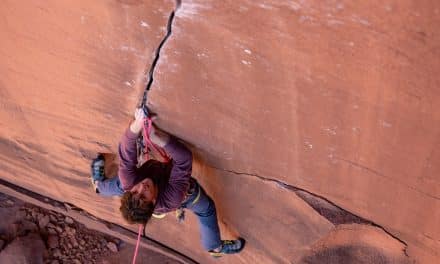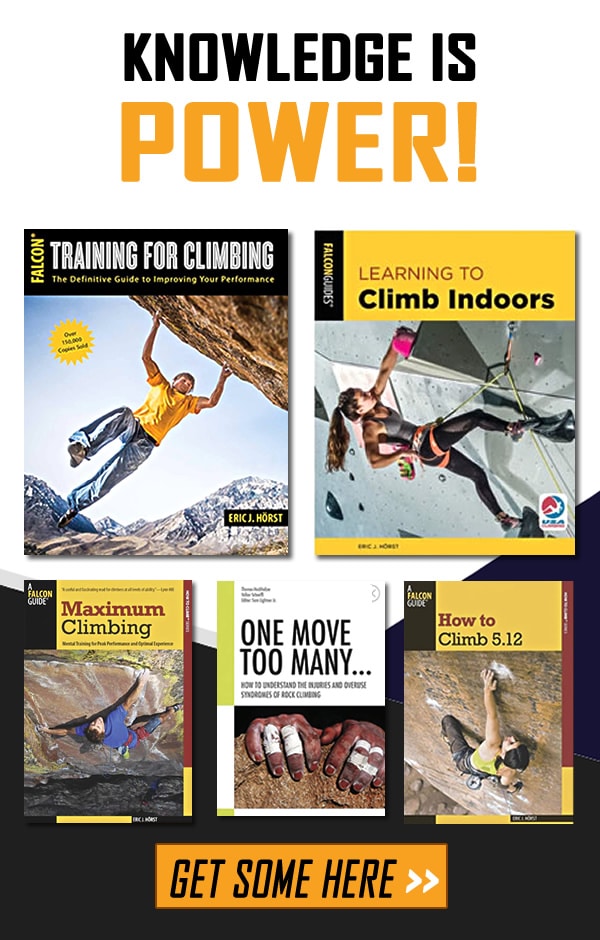Learn how America’s top sport climber, Jonathan Siegrist, trains in his pursuit of 5.15+! It’s a surprisingly back-to-basics approach that involves bouts of training—and lots of climbing—targeting the physical requirements of the next major project climb.
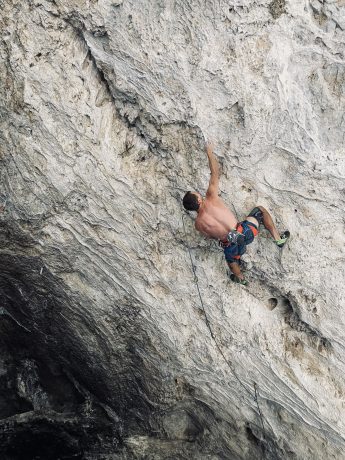
Siegrist trains methodically by prioritizing specific goals. Photo credit to Shaina Savoy.
Jonathan Siegrist, better known in the climbing world as “J-Star”, has his training down to a science. Not in the sense that he fills his hours with the most complex, newfangled exercises he can find; if anything, Siegrist’s protocol is simpler than you’d expect. But he knows what works, and he sticks to it.
J-Star keeps things fresh and frequent. “It’s pretty unusual that I don’t have some kind of outside climbing objective every month,” he explains. His training time mostly serves to carry him over in between these higher goals. Each session revolves around what he needs to do to prepare for the next objective.
That might sound obvious, but so many climbers get pulled into the trap of alluring new climbs that have nothing to do with the goal at hand. Steep, gymnastic climbs won’t do you many favors on your slab project, for instance. It takes discipline and forethought to stick to your guns for the sake of future sends.
Making a Plan
When designing his training routine for those weeks in between projects, J-Star starts with what needs to change from his last effort. What’s different about the next objective compared to the last? Any disparity in angle, hold style, rock type, intensity, or even climate dictates the nature of his sessions.
“If I have a really hard steep physical route on the horizon, then I’ll try to cater all of my training to that type of climbing, with some sub-limit goals in that same style beforehand that help get me in the right mindset and prepare my body.”
Most of the time, his transitions between climbs aren’t that drastic. “The changes have been pretty subtle over the last few years,” reflects Siegrist. “I might be changing to a place that’s equally steep but the goal route is really bouldery versus endurance oriented, or it could be that I’m going to a horizontal roof after climbing at 30 to 40 degrees.”
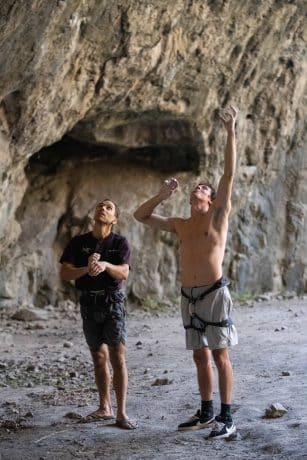
Studying the moves on Kinder Cakes, 5.15a. Photo Credit to James Lucas.
Recent Sends
This was the case during the prep period for his recent second ascent of Kinder Cakes, Rifle’s first 5.15a. Siegrist got into peak roof climbing condition thanks to a combination of steep indoor training and putting in the work on Resisting Arrest, a similarly-styled 14d near his home in Las Vegas. Ticking that climb first helped him build strength and confidence for Kinder Cakes.
The next climb he tackled after Kinder Cakes, though, posed a bigger challenge. “I was really nervous coming into climbing in Squamish because Spirit Quest could not be more different than the Skull Cave in Rifle,” he laughs. In that case, he had to change up his training more significantly to whip his fingers into shape for such a thin, techy route.
Practice Makes Progress
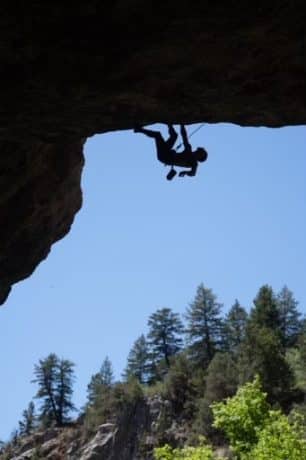
Siegrist climbing out the roof of the Skull Cave on Kinder Cakes, 5.15a. Photo credit to James Lucas.
Either way, Siegrist’s attitude towards training comes across as refreshingly straightforward. “The vast majority of my training is just climbing,” he says with a shrug. “If I feel like I could tune up my fingers a bit, I might end with some simple hangs. If I am headed to a very steep area, I might end with some bicep curls or weighted pull-ups. But for most of these objectives, I find that just a really hard climbing session has the best effect.”
That’s because Siegrist believes in the power of practice. At the heart of things, climbing’s a skill sport. It takes putting those skills to the test, over and over and over again, to hone them in for optimal performance. “Practice has been so forgotten,” he emphasizes. “I think that’s sad, because you can get a long way just by pushing yourself in climbing.”
Take a page from J-Star’s book and look at how much actual practice you’re getting in. Is that long list of supplement strength exercises really doing you much good, or could you use some of that time more wisely on the wall? Start with your goal and work backwards to stay in alignment with your vision.
Key Points:
- Set your sights on a specific goal
- Determine the differences between that goal and your most recent climbs
- Adjust your training to address those differences
- Prioritize practice on rock over supplemental exercises and simplicity over complexity
Related Articles
- Video: Three More 5.15a Ascents by Jonathan Siegrist
- Taking Care of Skin Splits – Jonathan Siegrist Style
- The Climbing Technique and Mastery of Jonathan Siegrist
- Alex Honnold & Jonathan Siegrist Training to Send!
Copyright © 2000–2023 Lucie Hanes & Hörst Training LLC | All Rights Reserved.

